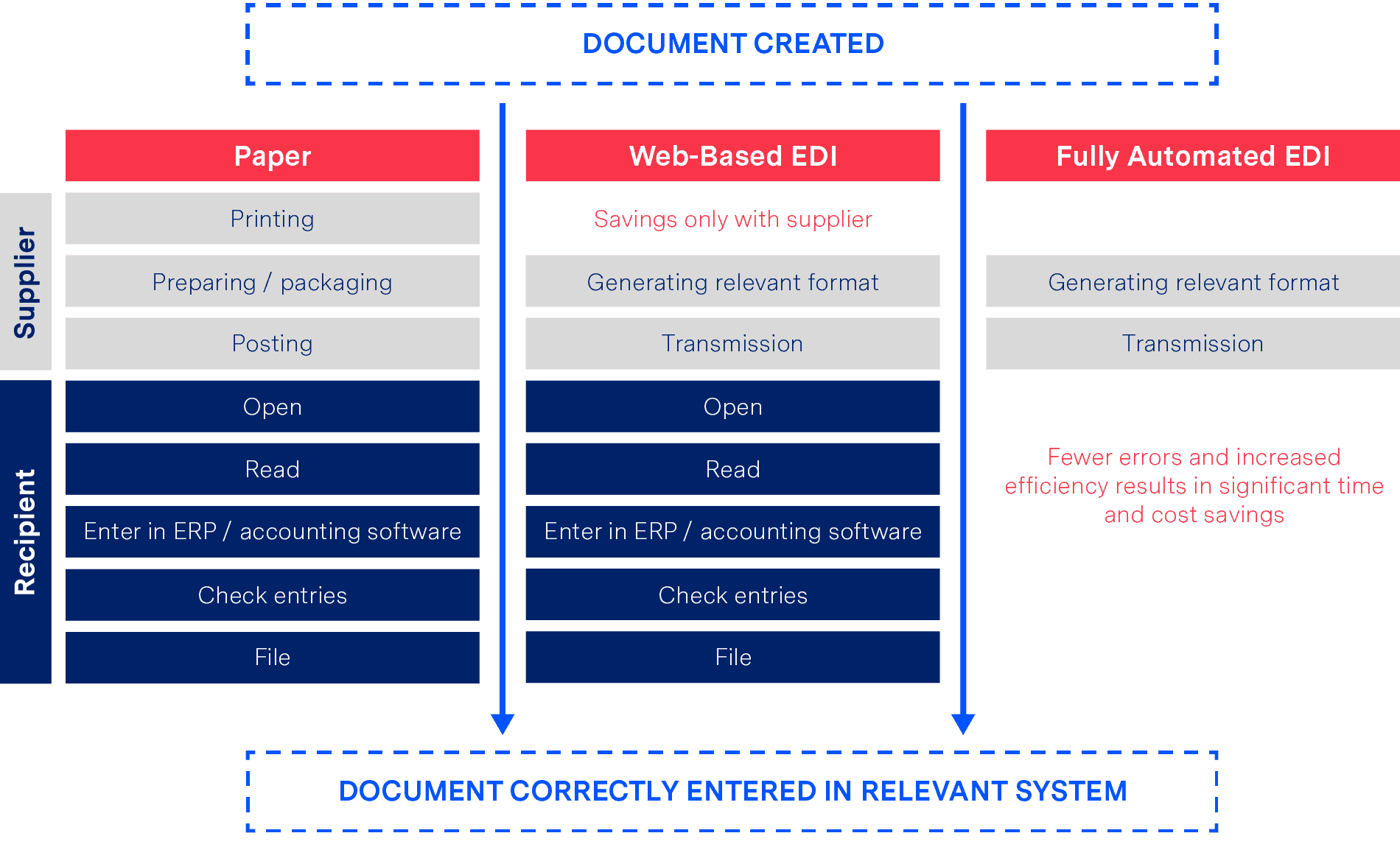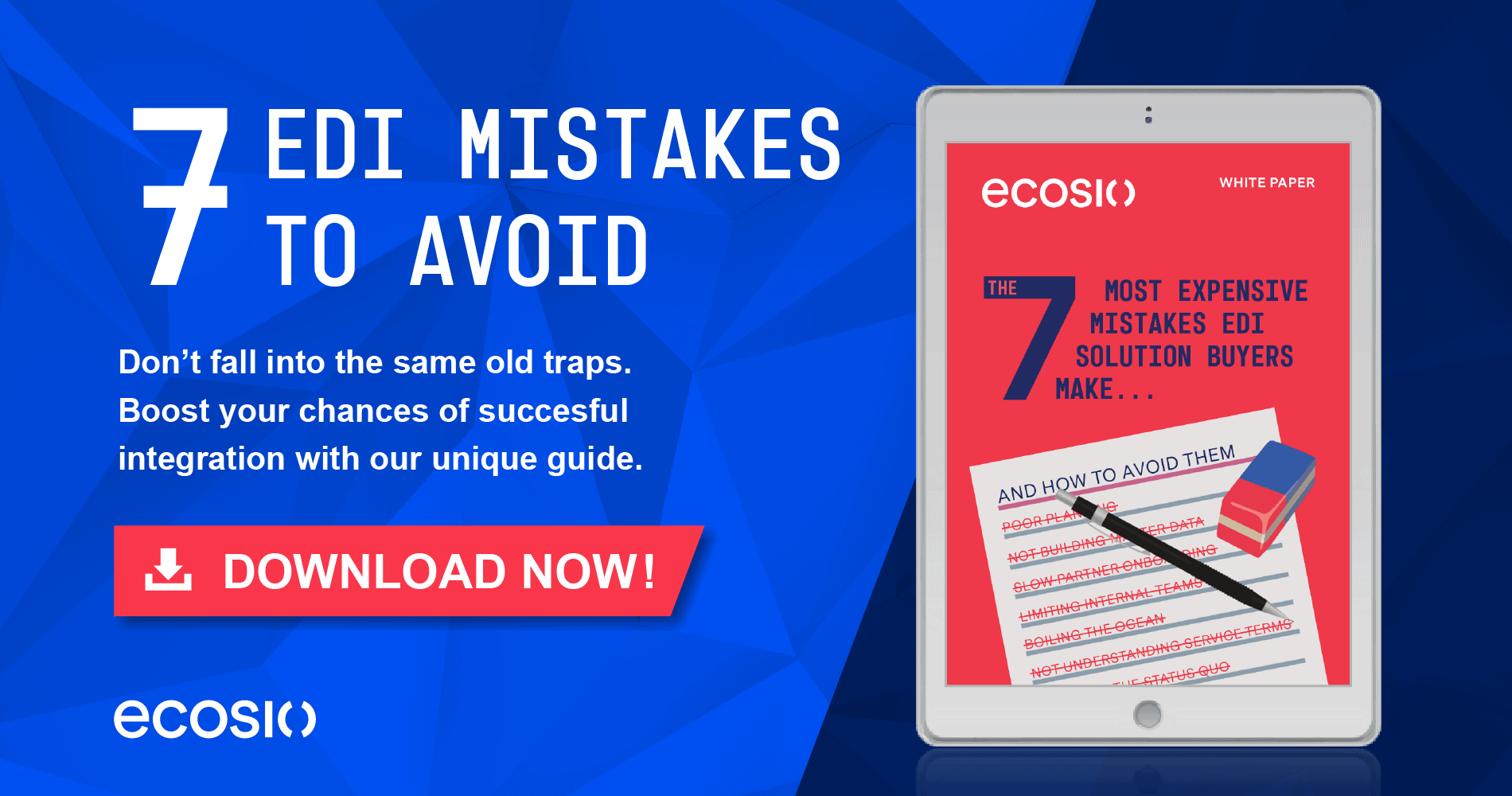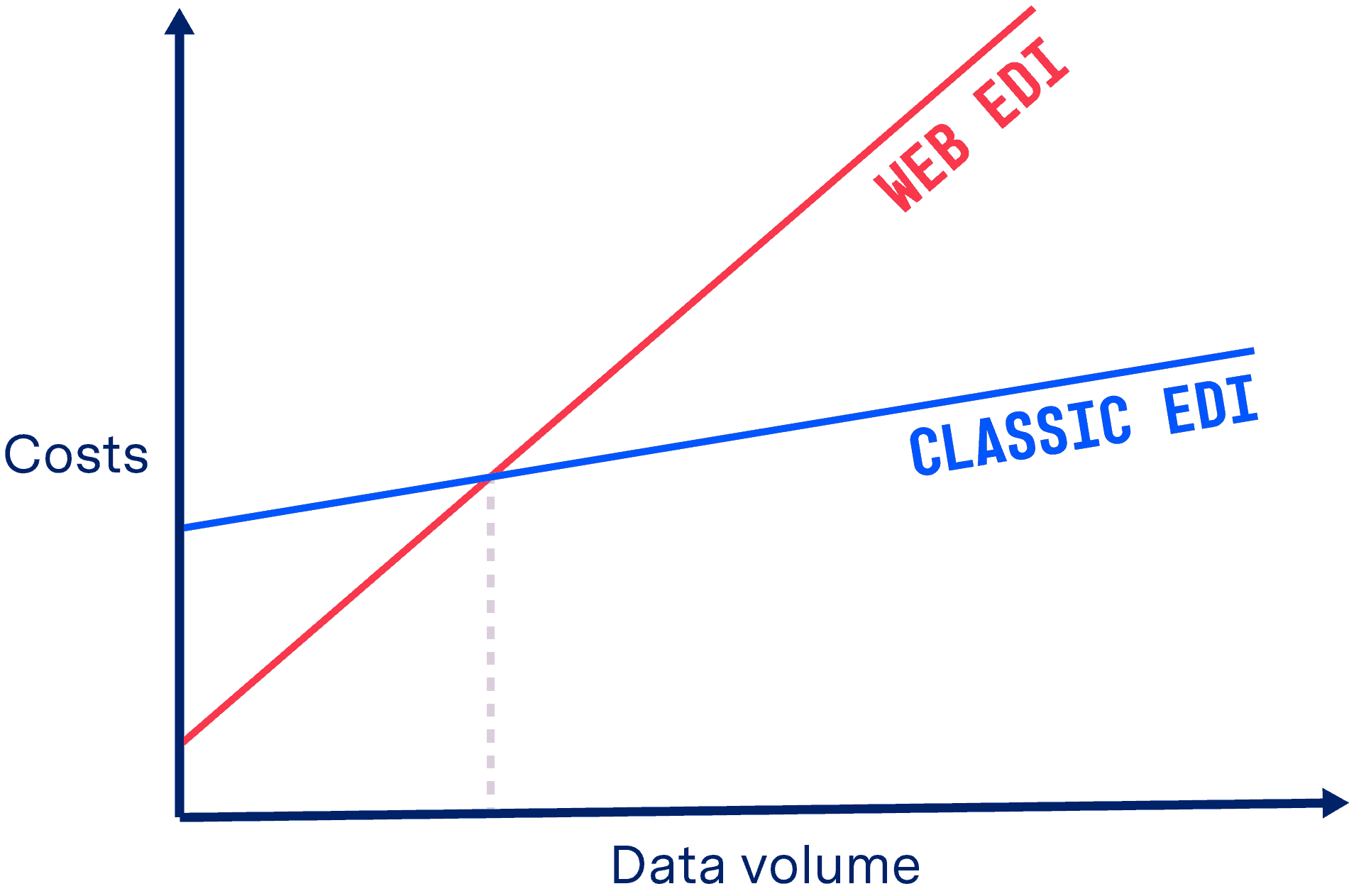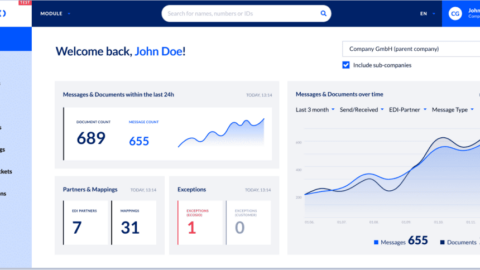As those using fully automated managed EDI systems will attest, by streamlining key B2B processes and freeing up internal resources, EDI can prove hugely conducive to business growth. For many businesses web-based EDI (or Web EDI) is a key part of the way in which they automate their supply chains. For the small and mid-sized suppliers using their partners’ Web EDI portals, however, the reality of web-based EDI can be very different, with navigation between multiple customer portals and manual data entry proving extremely time and resource-intensive.
Unfortunately, despite being well aware of the issues with web-based EDI, many businesses neglect to consider moving to a fully automated solution as they are either unaware of the substantial benefits of doing so or believe migration will be extremely complicated.
Admittedly, identifying the benefits of moving from a web-based to a fully automated EDI solution, and when best to do so, can be tricky, with different providers all saying different things. To help elucidate, this article explores the real difference between web-based and fully automated EDI, providing you with a clear picture so you can make the right decision for your business moving forward.
Starting out – web-based EDI
For many businesses, the first interaction with EDI comes as a result of a large retail customer requiring EDI capability from their trading partners. In order to enable their suppliers to trade with them efficiently, these larger customers will generally provide access to a web-based EDI portal.
Naturally, as supply chain businesses grow, so do their trading partner networks. As such, in time many smaller and mid-sized suppliers quickly find themselves having to manage B2B data exchange via multiple web-based EDI portals. This in turn can compromise growth, efficiency and profits, as exchanging commerce critical information becomes increasingly complicated and resource-heavy.
Where most businesses go wrong
Unfamiliar with the key differences between web-based EDI and fully automated solutions, many organisations purchase their own web-based EDI package in order to simplify document exchange by removing the need to access multiple customer portals. However, while this consolidation admittedly saves some time, it fails to combat the main business problem that EDI was developed to fix – time-consuming and error-prone manual data entry.
As illustrated in the diagram below, although the communication between your web-based EDI platform and your partners may be automated, seamless integration between your EDI portal and your ERP system is not possible. This means that all information must be manually transferred. In essence you’re paying to do business with those customers who require EDI, without experiencing any of the benefits of EDI yourself.
How does fully automated EDI differ from web-based EDI?
The key difference between web-based and fully automated EDI is the fact that the latter allows your business partners’ ERP system effectively to talk directly to your own, bypassing the need for human intervention. Individual documents are then automatically available in your ERP system and can be searched for and edited in your existing user interface.
By removing the need for manual data entry, both error rate and pressure on internal teams are greatly reduced.
“What are the cost implications?”
Although Web EDI offers suppliers the benefit of being able to expand their partner networks to include larger retailers, in terms of the cost-effectiveness of processing documents, web-based EDI is virtually the same as traditional paper/PDF communication.
As illustrated in the figure below, the only real saving of moving from paper-based document exchange to Web EDI is printing costs. On the other hand, moving from web-based EDI to fully automated EDI drastically reduces the number of steps to process a document. Thanks to seamless integration in the user’s ERP system, fully automated EDI requires only two steps for successful end-to-end exchange: generation and transmission.
While estimating the cost benefits of this process improvement is complicated, based on numerous reports from IBM, GS1 and others, the expected savings of moving to a fully automated system can be calculated at around 64%. This figure factors in FTE costs, opportunity costs of more value-adding activities, errors, delays and postage/fax fees (if relevant).
As we look at in our blog post on the topic, however, perhaps the biggest factor when it comes to achieving cost savings is making the right EDI supplier choice.
How is this process improvement achieved?
The key factor behind this streamlining of B2B document exchange is deep ERP integration.
Opting for a managed EDI solution offering deep integration (as opposed to relying on customers’ web-based EDI portals) means that when it comes to monitoring, accessing, troubleshooting or modifying messages, you can do it all directly in your ERP system. This allows businesses to self serve – avoiding delays and relieving pressure on in-house resources.
Unlike many other providers, ecosio offers deep ERP integration, creating a seamless UI experience thanks to our unique and powerful API. With several connectors capable of creating a fast link between ecosio and any ERP system, achieving unparalleled message status visibility is a simple process.
Differences at a glance
| Web EDI | Fully automated EDI |
|
|
“So when should I make the switch?”
In general, a classic EDI solution is always preferable to a Web EDI solution, because only with classic, managed EDI can the full automation potential of electronic data exchange be realised. However, in practice the transition to a fully automated system usually comes after a period of using web-based EDI portals.
As shown in the figure below, the use of web-based EDI becomes uneconomical beyond a certain volume of documents (and increasingly so as document volume increases over time).
Want to learn more?
Discover more about our updated Web EDI product, ecosio.flow.
If you are a supplier looking to move from your customers’ web-based EDI portals to experiencing the benefits of fully automated EDI yourself, get in touch today. We’re happy to answer any questions you have!


















